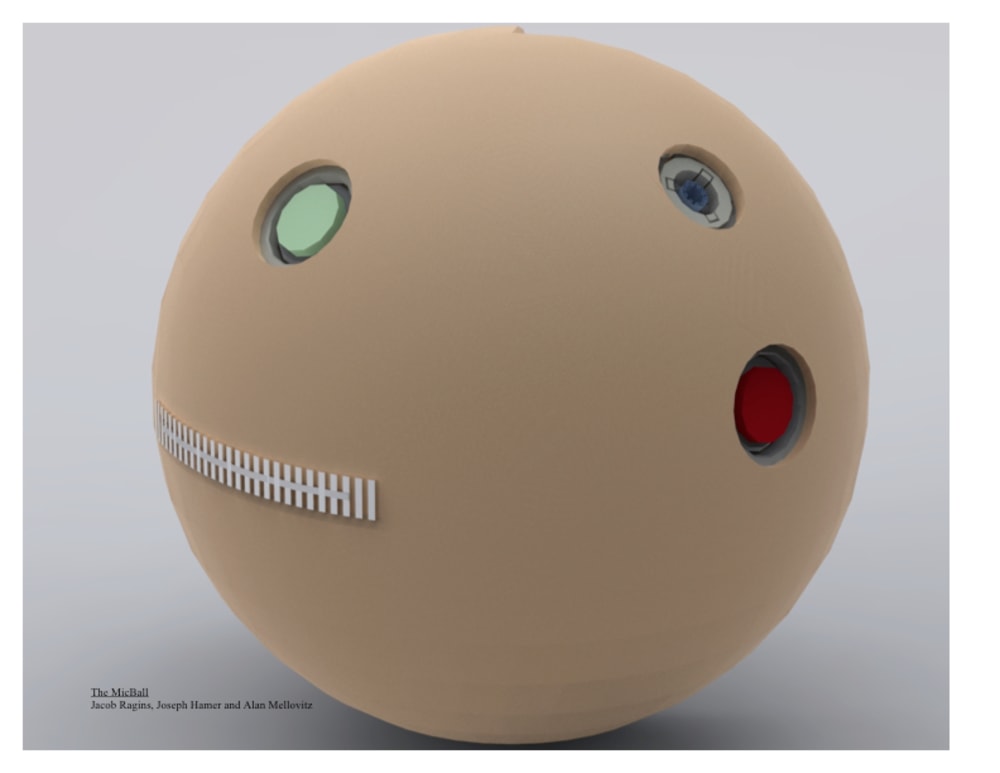The MicBall is a non-intimidating microphone that enables users to conveniently participate in spacious, otherwise hard to navigate environments by tossing it from one user to another. The innovative tool encourages audience participation by eliminating the necessity to raise one’s voice in a large room in order to be heard. The spherical shape and soft core makes students feel more comfortable and willing to speak because it is a more familiar everyday object, as opposed to the traditional microphone. Ideally, an instructor's goal is to create an environment that accommodates the learning styles of all his/her students, however this goal becomes challenging with vastly increasing class sizes.
Instructors are often under the impression that the absence of raised hands suggests that students comprehend the lesson, which creates a false illusion of learning (Stowell). By incorporating the MicBall into the curriculum, students will no longer feel like they are challenging authority or being impolite by asking their personal questions (Ratto 1). Current Audience Response Technology, such as iClickers, are constrained to preset responses, which disallow open-ended questions and answers (Adams 56). The MicBall resolves this obstacle, while also opening a new field of teaching methods, by creating the opportunity of quicker, easier and a less intimidating instrument for people to utilize.
The device consists of a low-density foam ball covered in a pattern-stitched vinyl, creating a safe, sanitary and throwable microphone. If the user needs to switch the channel or change the batteries, the electronics are removable through a zipper pouch inside the foam ball. The surface components including the push-to-talk button, the laser pointer, and the microphone are mounted to plastic rings sewn to the interior face of the vinyl, thereby creating a durable design. The buttons and laser pointer are covered in a transparent mylar, which protects the components and users from any injuries. Expandable Polystyrene Foam houses the delicate electronics along with a strategically placed battery that counteracts any unbalanced center of mass, allowing for an ultra-smooth trajectory.
Once a user catches the device, he/she will intuitively press the green "talk" button, which then illuminates and the microphone becomes audible to the entire audience. The user then has the option to press the red button, enabling the laser pointer to reference any objects in the presentation. The professor holds an RF keychain that can disable the audio transmission of any MicBall in order to maintain control of the audience. Each MicBall includes an embedded RFID tag for security purposes.
Not only does the MicBall revolutionize the design of a durable microphone enclosure, it also represents a gateway into a new level of audience engagement and participation. Incorporating a laser pointer with a passable microphone is a simple yet extremely differentiating improvement to classroom technology. Since the MicBall utilizes traditional microphone technology, universities’ can incorporate this innovation into their classrooms or auditoriums at low costs. By simply changing the enclosure of a microphone, the future of classroom technologies, learning effectiveness and audience engagement is dramatically improved.
Like this entry?
-
About the Entrant
- Name:Jacob Ragins
- Type of entry:teamTeam members:Jacob Ragins, Joseph Hamer, Alan Mellovitz
- Hardware used for this entry:Mac ProSoftware used for this entry:PTC
- Patent status:pending

